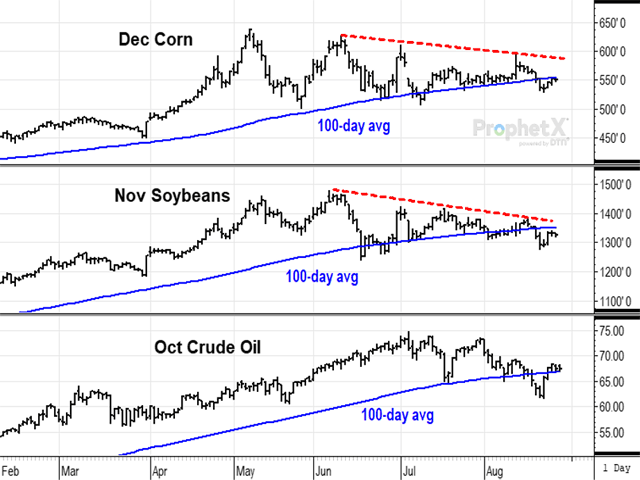Todd's Take
Markets Survive Latest COVID-19 Scare
Fear is a powerful motivator and I've often wondered if it is the most powerful of forces that move markets. Wired deep into the human brain, fear can save lives and protect us from all sorts of threats. One advantage of fear is that it is instinctual with no mental processing required. The downside of fear is that it often gets expressed as ready, fire, aim. Fear allows no time for considering facts or weighing options. It is a knee-jerk response we see frequently in markets.
Last week's risk-off reaction to news about the growing spread of COVID-19 was a good example of fear in action. I'm not saying the news wasn't legitimate -- it certainly was, and I don't intend to make light of a serious threat.
However, what gets easily overblown and often shows fickle timing is the market's reaction to such news. In early August, we were learning that 46 cities in China were issuing travel restrictions as authorities were acting to keep the delta variant from spreading throughout the country.
On Aug. 7, China's official customs data showed crude oil imports were down 20% in July from a year ago. Crude oil has become an important market indicator for global coronavirus concerns, and prices fell $1.80 a barrel on the Monday following the news.
On Aug. 12, concerns about the economic impact of shipping congestions increased when several sources reported China shut down a key terminal in Ningbo, China, due to the presence of one infected worker.
On Aug. 18, according to researchers at Johns Hopkins University, the global COVID-19 death toll surpassed 4 million with 208 million infections reported. That same day, October crude oil fell over a dollar a barrel to $65.21 and closed below its 100-day average for the first time since November 2020.
P[L1] D[0x0] M[300x250] OOP[F] ADUNIT[] T[]
In DTN's closing market video on Aug. 19, I noted how crude oil and copper prices were turning lower, reflecting growing concerns about the spread of COVID-19 and its impact on the world economy. That same day, nearly every commodity on the futures board closed lower, including grains. Soybeans are especially sensitive to news from China, the world's largest buyer of soybeans. The November contract fell 33 cents that Thursday, breaking out the bottom of a triangle formation prices had traded in all summer.
On Aug. 20, DTN Ag Policy Editor Chris Clayton wrote about how the logistical challenges of the pandemic were creating shipping logjams and adding to higher shipping costs (see https://www.dtnpf.com/…). The bearish impact of COVID-19 on world economic activity and the flow of goods looked overwhelmingly convincing at that point and captured traders' attention. October crude oil fell $1.36 to $62.14, its lowest close in three months.
December corn and November soybeans both finished the week ended Aug. 20 with significant bearish breaks in their technical chart patterns. Frankly, it is common for both prices to trade lower in August as traders anticipate the impending arrival of new harvest supplies. The renewed eruption of coronavirus concerns might have unfolded as a surprise to the markets, but lower grain prices in August were not shocking.
As I write this just four trading sessions later, October crude oil has rebounded $5.28 from the Aug. 20 close and is back above its 100-day average. November soybeans have gained 35 1/2 cents and December corn is up 13 3/4 cents. Neither soybeans nor corn are above their 100-day averages, but it is interesting that they have not extended their lows after such visible and obvious bearish breakouts.
China does appear to be making progress limiting new infections and there are reports the port at Ningbo will soon be functioning again. But no one at this point is confident the threat of coronavirus is behind us, and no one can say how long it will be before we are.
I know we're all coronavirus-weary and would rather spend time guessing corn yield estimates in Illinois. But the reality is that markets are susceptible to panic attacks, and with the delta variant on the loose, it doesn't take much to spook traders.
There will likely be more bouts of volatility ahead, which will make marketing corn and soybeans an even tougher challenge in 2021-22. To protect yourself from getting swept up in the emotion of the week, it is important to have a disciplined approach for understanding markets and to take advantage of opportunities when they arise -- something we try to do with DTN Six Factors Strategies.
Join us at this year's DTN Ag Summit in Chicago on Dec. 5 to 7 -- our annual event with several learning opportunities to choose from. Many tell us they enjoy getting acquainted with fellow producers and others from the ag industry. Find out more details and register at www.dtn.com/dtn-ag-summit/.
**
Comments above are for educational purposes only and are not meant as specific trade recommendations. The buying and selling of grain or grain futures or options involve substantial risk and are not suitable for everyone.
Todd Hultman can be reached at Todd.Hultman@dtn.com
Follow him on Twitter @ToddHultman1
(c) Copyright 2021 DTN, LLC. All rights reserved.




